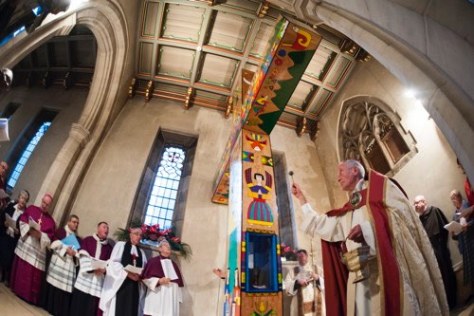
Lesnes Abbey is now stamping pilgrim passports.
The stamp features the pike from the arms of abbey founder Richard de Lucy who knew Thomas Becket .
The de Lucy fish were part of the abbey seal.
Pike in Latin is lucius which is a reference to the Lucy name.
Pilgrims arriving in Canterbury will find the de Lucy pike shield in the cathedral cloister ceiling.
Walkers starting out from Winchester can see the tomb of the Lesnes Abbey founder’s son Godfrey, who became the bishop, next to St Swithun’s shrine.
Passports are stamped at the Chestnuts refreshment kiosk coffee shop in the Lesnes Abbey garden.
From early days the abbey has been a stopping point on the way to Canterbury with pilgrims turning off the main road through Welling to reach Lesnes.
In 1300 Edward I visited on his way to Canterbury as did the Bishop of Worcester who stayed the night in 1313.
Geoffrey Chaucer, accompanied by the landlord of Southwark’s Tabard Inn, visited in 1387 when writing The Canterbury Tales.
Passports can be obtained from Southwark Cathedral shop. Lesnes Abbey is reached on the first or second day out of London.
During October the Lesnes Abbey kiosk is open daily until 4.30pm.




















